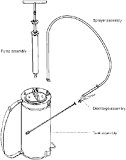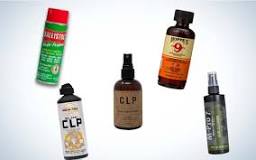Cleaning out a sprayer tank is crucial for maintaining its performance and longevity. To effectively clean a sprayer tank, you can use a combination of water, a cleaning agent like vinegar or bleach, and a good scrub brush. This ensures that any leftover chemicals or residues are thoroughly removed, preventing contamination in future applications.
Why Clean Your Sprayer Tank?
Keeping your sprayer tank clean isn’t just about aesthetics; it plays a vital role in the effectiveness of your spraying tasks. Here’s why you should make it a priority:
Preventing Chemical Residue
If you don’t clean your tank, leftover chemicals can mix with new ones, leading to unpredictable results. This can be harmful to plants and the environment.
Maintaining Equipment
A clean tank helps keep your sprayer in good condition. Residues can corrode parts and lead to expensive repairs down the line.
Ensuring Safety
Cleaning out your sprayer tank reduces the risk of chemical exposure. You don’t want to accidentally spray something harmful on your garden or lawn!
Steps to Clean Your Sprayer Tank
Cleaning your sprayer tank isn’t rocket science, but it does require some elbow grease. Here’s how to do it:
Step 1: Rinse with Water
Start by filling the tank with clean water and running the sprayer for a few minutes. This helps flush out any loose debris or liquid.
Step 2: Use a Cleaning Agent
After rinsing, mix water with a cleaning agent. Vinegar is great for neutralizing many chemicals, while bleach can help disinfect. Just make sure to follow the manufacturer’s guidelines for dilution.
Step 3: Scrub It Down
Use a scrub brush to get into all those nooks and crannies. Don’t forget the nozzle and hoses! A thorough scrub will help remove stubborn residues.
Step 4: Final Rinse
Once you’ve scrubbed everything, rinse again with clean water until there’s no more suds or smell of cleaning agents.
Tips for Maintaining Your Sprayer Tank
- Clean After Each Use: It’s easier to clean right after you’re done than waiting until the next time.
- Check for Damage: While cleaning, inspect hoses and seals for wear and tear.
- Store Properly: Keep your sprayer in a dry place to avoid rusting and damage.
Summary
In summary, keeping your sprayer tank clean is essential for effective spraying and equipment longevity. By using water, vinegar or bleach, and a good scrub brush, you can ensure that your tank is ready for whatever job comes next. A little maintenance goes a long way!
FAQ
How often should I clean my sprayer tank?
It’s best to clean your sprayer tank after each use, especially if you’ve used different chemicals. This prevents cross-contamination and keeps everything running smoothly.
Can I use soap instead of vinegar or bleach?
Yes, mild dish soap can work well too! Just make sure it’s not too harsh; you want something that cleans without leaving residues that could affect future sprays.
What should I do if my sprayer has clogs?
If you encounter clogs, try soaking the affected parts in warm soapy water. A gentle scrub with a brush can also help dislodge stubborn blockages.
Is it safe to use bleach for cleaning?
Bleach can be effective but be cautious! Always dilute it properly and rinse thoroughly afterward to avoid any harmful residues in your sprayer.







